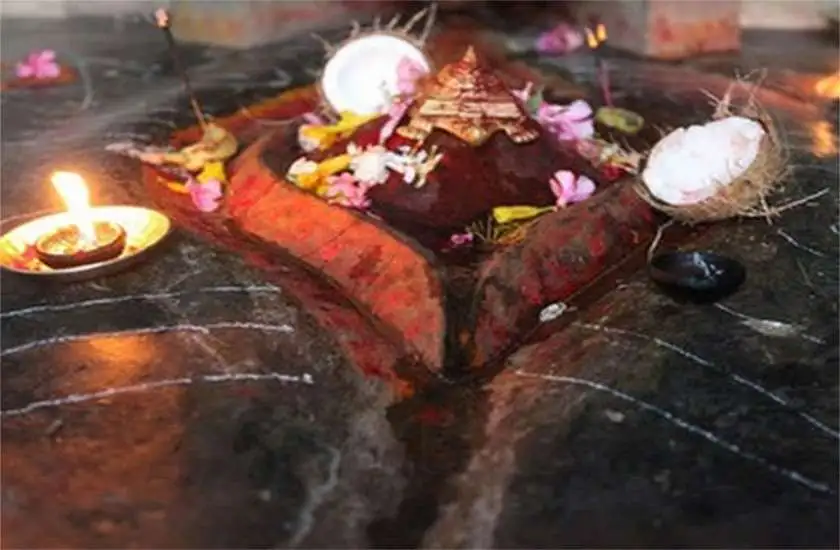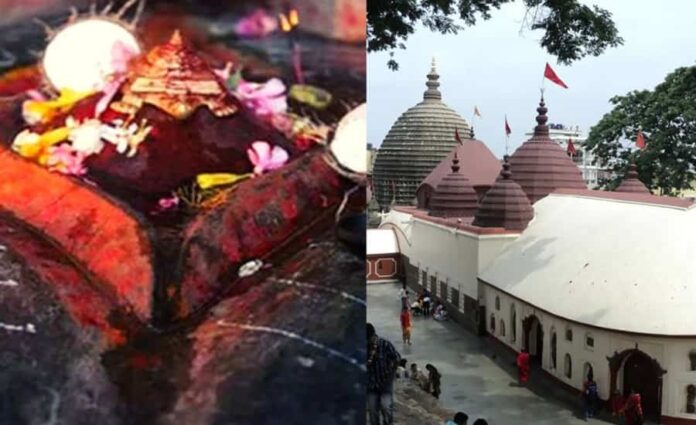Discover the Mystical Secrets of Kamakhya Mandir
1. Introduction to Kamakhya Mandir: A Sacred Abode
Kamakhya Mandir, located in the Nilachal Hill of Guwahati, Assam, is one of the most revered temples in India. Dedicated to Goddess Kamakhya, it is one of the oldest and most significant Shakti Peethas. The temple attracts devotees from all over the world who come to seek blessings and experience its spiritual ambiance. The temple complex is serene and peaceful, making it an ideal place for meditation and worship.
2. Historical Background of Kamakhya Mandir
The Kamakhya Mandir has a rich history that dates back to ancient times. It is believed that the temple was built during the Mleccha dynasty, with significant contributions from the Koch king Nara Narayan in the 16th century. Over the centuries, the temple has undergone several renovations and restorations. The temple’s history is intertwined with various legends and mythologies, making it a fascinating subject of study for historians and devotees alike.
3. Architectural Marvel of Kamakhya Temple
The Kamakhya Temple is an architectural marvel, showcasing the classical style of temple architecture. The main temple is shaped like a beehive, with intricate carvings and sculptures adorning its walls. The temple complex consists of several smaller temples dedicated to various deities. The sanctum sanctorum, known as the Garbhagriha, houses the main deity. The temple’s unique structure and design reflect the rich cultural heritage of the region.
4. Religious Significance of Kamakhya Mandir
Kamakhya Mandir holds immense religious significance for Hindus, especially for followers of the Shakti tradition. It is one of the 51 Shakti Peethas, where the yoni (female genitalia) of Goddess Sati is believed to have fallen. The temple is considered a powerful center of Tantric worship, attracting practitioners from across the globe. Devotees believe that worshipping at Kamakhya Mandir fulfills their desires and grants them spiritual liberation.

5. The Legend of Goddess Kamakhya
The legend of Goddess Kamakhya is deeply rooted in Hindu mythology. According to the story, Sati, the wife of Lord Shiva, immolated herself in protest against her father Daksha’s insult to her husband. In grief and anger, Shiva performed the Tandava dance, carrying Sati’s body. To calm him, Lord Vishnu dismembered Sati’s body with his Sudarshan Chakra, and her yoni fell at the spot where Kamakhya Mandir stands today. This legend emphasizes the temple’s significance as a symbol of divine feminine power.
6. Unique Festivals Celebrated at Kamakhya Temple
Kamakhya Mandir is known for its vibrant and unique festivals, which attract thousands of devotees. One of the most prominent festivals is Durga Puja, celebrated with great enthusiasm and devotion. The temple also hosts the Manasa Puja, dedicated to the snake goddess Manasa. These festivals are marked by elaborate rituals, devotional songs, and dance performances, creating a festive atmosphere that captivates visitors.
7. Ambubachi Mela: The Grand Festival
Ambubachi Mela is the most significant festival celebrated at Kamakhya Mandir. Held annually in June, it marks the menstrual cycle of Goddess Kamakhya. During this time, the temple remains closed for three days, symbolizing the goddess’s period. On the fourth day, the temple reopens with grand celebrations. Thousands of devotees, including ascetics and Tantric practitioners, gather to seek blessings and participate in the rituals. The festival is a unique blend of spirituality, tradition, and festivity.
8. Daily Rituals and Practices at Kamakhya Mandir
The daily rituals and practices at Kamakhya Mandir are deeply rooted in tradition and devotion. The day begins with the Mangala Aarti, followed by various other rituals such as offering flowers, fruits, and sweets to the deity. The temple priests perform elaborate ceremonies, chanting hymns and mantras. Devotees can also participate in the Bhog Aarti and witness the evening Aarti, which creates a mesmerizing atmosphere with the sound of bells and the fragrance of incense.
9. The Mystical Nilachal Hill: Home of Kamakhya Temple
The Nilachal Hill, where Kamakhya Mandir is located, is considered a sacred and mystical place. The hill offers panoramic views of Guwahati city and the Brahmaputra River. It is believed that the hill has powerful energy that enhances the spiritual experience of the devotees. The serene surroundings, lush greenery, and tranquil ambiance make it an ideal place for meditation and introspection. The Nilachal Hill adds to the temple’s charm and allure.

10. Pilgrimage Journey to Kamakhya Mandir
A pilgrimage journey to Kamakhya Mandir is a spiritually enriching experience. Devotees from all over the world visit the temple to seek blessings and connect with the divine. The journey involves a steep climb up the Nilachal Hill, offering a sense of adventure and devotion. Pilgrims often chant hymns and sing devotional songs during the ascent, creating a spiritual atmosphere. The journey culminates in a profound sense of peace and fulfillment upon reaching the temple.
11. Spiritual Experience at Kamakhya Temple
Visiting Kamakhya Mandir provides a profound spiritual experience. The temple’s serene and sacred atmosphere allows devotees to connect with the divine on a deeper level. The rituals, prayers, and chants create a sense of tranquility and inner peace. Many visitors report feeling a strong spiritual energy at the temple, which enhances their devotion and faith. The experience of offering prayers and seeking blessings at Kamakhya Mandir is truly transformative.
12. Kamakhya Mandir: A Hub of Tantric Worship
Kamakhya Mandir is renowned as a hub of Tantric worship. Tantrism is an esoteric tradition that emphasizes the worship of the divine feminine and the use of rituals to attain spiritual enlightenment. The temple attracts Tantric practitioners from around the world who come to perform rituals and seek spiritual guidance. The unique Tantric practices and beliefs associated with Kamakhya Mandir make it a significant center of Tantric worship and study.
13. Visitor Information: Timings, Entry Fees, and Guidelines
For those planning to visit Kamakhya Mandir, it is important to be aware of the temple’s timings, entry fees, and guidelines. The temple is open from early morning to late evening, with specific timings for different rituals. There is no entry fee for visiting the temple, but donations are welcome. Visitors are advised to dress modestly and follow the temple’s rules and regulations. It is also recommended to visit during weekdays to avoid the rush of devotees on weekends and festivals.
14. Nearby Attractions and Points of Interest
Apart from the Kamakhya Mandir, the Nilachal Hill and its surroundings offer several attractions and points of interest. Visitors can explore the Umananda Temple, located on a small river island in the Brahmaputra. The Assam State Museum and the Guwahati Planetarium are also worth visiting. For nature lovers, the Pobitora Wildlife Sanctuary, known for its one-horned rhinoceros, is a short drive away. These attractions make a visit to Kamakhya Mandir a comprehensive cultural and spiritual experience.

15. Preservation and Conservation Efforts at Kamakhya Mandir
Preservation and conservation efforts at Kamakhya Mandir are crucial to maintaining its historical and cultural significance. The temple authorities, along with various organizations, work towards preserving the temple’s structure and heritage. Regular maintenance, restoration projects, and awareness campaigns are undertaken to protect the temple from natural and human-induced damage. These efforts ensure that future generations can continue to experience and appreciate the spiritual and cultural legacy of Kamakhya Mandir.
10 frequently asked questions (FAQs) about Kamakhya Mandir:
- What is the significance of Kamakhya Mandir?
- Kamakhya Mandir is one of the most revered Shakti Peethas in India, dedicated to Goddess Kamakhya. It is a major center for Tantric worship and is believed to be the place where the yoni (female genitalia) of Goddess Sati fell, symbolizing divine feminine power.
- Where is Kamakhya Mandir located?
- Kamakhya Mandir is situated on the Nilachal Hill in Guwahati, Assam, India. It offers panoramic views of the city and the Brahmaputra River.
- What are the main festivals celebrated at Kamakhya Mandir?
- The most prominent festivals at Kamakhya Mandir are Ambubachi Mela, celebrating the goddess’s menstrual cycle, and Durga Puja. Other significant festivals include Manasa Puja and various traditional Hindu celebrations.
- What is the best time to visit Kamakhya Mandir?
- The best time to visit Kamakhya Mandir is during the cooler months from October to March. However, visiting during Ambubachi Mela in June offers a unique cultural experience.
- What are the temple timings and entry fees?
- Kamakhya Mandir is open from early morning to late evening. There is no entry fee, but donations are welcome. Specific timings for rituals and Aarti may vary.
- What is Ambubachi Mela, and why is it significant?
- Ambubachi Mela is an annual festival marking the menstrual cycle of Goddess Kamakhya. The temple remains closed for three days and reopens with grand celebrations. It is a major event attracting thousands of devotees and practitioners of Tantric rituals.
- What should visitors keep in mind when visiting Kamakhya Mandir?
- Visitors should dress modestly, follow temple rules and regulations, and be respectful of the religious practices. It is also advisable to visit on weekdays to avoid large crowds.
- Is photography allowed inside Kamakhya Mandir?
- Photography is generally restricted inside the main temple complex. However, visitors can take pictures of the exterior and surrounding areas. It is best to check with temple authorities for specific guidelines.
- How can one reach Kamakhya Mandir?
- Kamakhya Mandir is easily accessible by road from Guwahati city. The nearest airport is Lokpriya Gopinath Bordoloi International Airport, and the closest railway station is Kamakhya Junction. Taxis and local transport are available from these points to the temple.
- Are there any accommodation facilities near Kamakhya Mandir?
- Yes, there are several hotels, guesthouses, and lodges near Kamakhya Mandir catering to different budgets. Many pilgrims prefer staying in Guwahati city, which offers a wider range of accommodation options.

